
I'm Alex Kearney, I'm Science at the University of Alberta. I focus on Artificial Intelligence and Epistemology.

I'm Alex Kearney, I'm Science at the University of Alberta. I focus on Artificial Intelligence and Epistemology.
Dylan and I walked up to the Japanese gardens and meandered around. It's still early in the year, but there was an abundance of blossoms opening up to the world. We sat and had tea next to the wet gardens, where a hummingbird joined us.

Getting ready to come home.
Kyōto Station → Shinagawa Station → Narita, Chiba
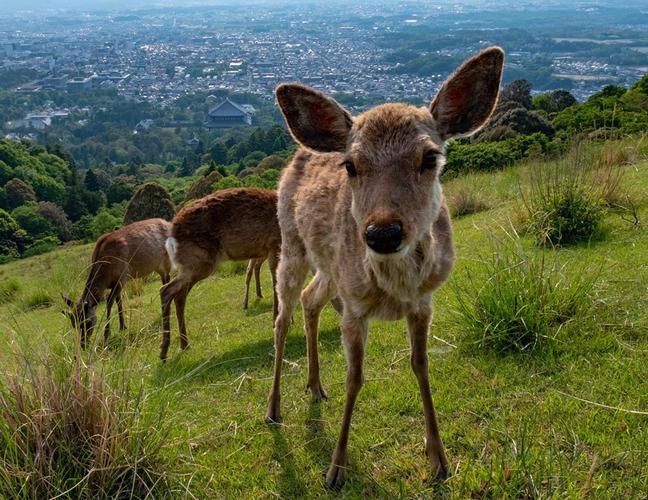
Yesterday I visited Nara and hiked to the top of Mount Wakakusa. The friends I met at the top weren’t just hanging out at the peak: deer are all throughout the city, mingling with people; however, this congregation was a bit more wary of me than the city-dwellers. After sitting and resting a bit they warmed up to me and continues grazing as I watched the sunset over Todai-ji. In Nara, deer are sacred natural monuments believed to be messengers of the gods by one of the local temples.
Kyōto Station → Tōdai-ji → Mount Wakakusa

Yesterday I made it to the top of mount Hieie: the second highest mountain in the Kyoto prefecture (according to the family I met at the top). At the top of the mountain I took a break to enjoy some tea and met three groups of people who made it to the top.
The first was a Canadian from Toronto who was traveling.
The second was a trail-runner. He started digging around behind one of the trees and retrieved a mysterious granite pyramid which he placed in front of the tree. He said it was famous. I’m still confused by this.
The third was a Japanese family who hiked the mountain. The father started telling me how young Japanese people don’t like hiking and that Japanese people don’t hike anymore. He told me about all the mountains in the area, the number of mountains in japan, and the heights of their peaks.
I left the mountain informed.
Kyōto Station → Ōtsu → Mount Hiei
I made it to the top of Mount Hiei, a sacred mountain in Japan. At the top, I met a guy from Toronto. Canadians are everywhere.

Photograph of the the moment I consider giving it all up to become a tea-farmer. Maren recommended coming to @obubuteafarms for a tour of their estate. The tea tasting we had was so memorable because we also got to see the whole process: from tending to the bushes, to harvesting and processing! I even learned a few new brewing techniques 🍵
Kyōto Station → Kamo, Niigata → Wazuka, Kyoto

Yesterday I went to Kinkaju-ji: the golden pavilion. I got there early to beat the crowds of tourists, and it was filled with school-kids instead! A group of them wanted to take a picture with me. I’m still not sure why 😂 maybe it was a school assignment?
One of the most frustrating aspects of traveling with friends who are men is having your change, or your tickets, or even your passport handed off to the man. Doesn’t matter if you are booked and paying separately, the dude gets your stuff.
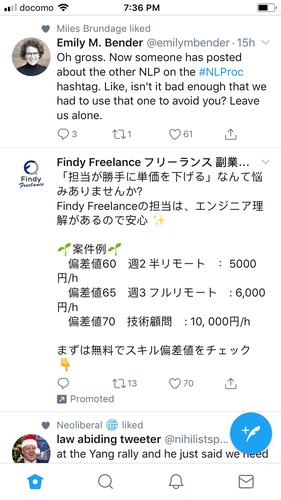
Unexpected upside to traveling in a country who’s language you don’t understand: all location-based ads are effectively blocked by being uninterpretable.
It’s like Lorem Ipsum.
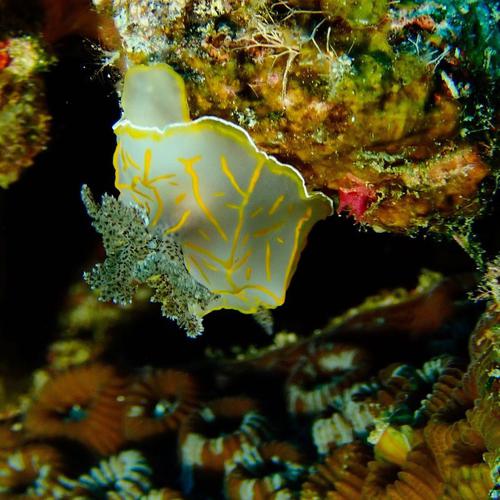
I found this little friend yesterday! A cute little Nudibranch. I love how varied the colours and shapes and sizes of sea-slugs are! They’re so delicate and beautiful. I could sit and watch these guys inch along all day 🐛
I’m really fortunate my trip aligned with the right season to see them. They only come out when the water is cooler; when it warms up, they head inside the coral to avoid the heat.
I couldn't book in for diving today, so it was a bit of a write-off. I didn't have much energy, so I just milled about around town. I found a nice urban market to have breakfast and meandered the side-streets.
I milled around the city center, dithering about which onsen to go to. Travelling around Okinawa is challenging without a vehicle. I found a little crafts store and spent some time taking in weaving and ceramics. Not sure about what to do, I dithered too long. I ran from the station to my bus stop, just missing the bust to the spa. I guess the place the Thai kids recommended will have to wait until another trip. I slowly made my way back to the hotel.
Today, I was one of many people picked up to go diving. When I hopped on the van, there was already a lady from Ohio. We chatted it up, and I found out she did software training with doctors. Neat. Next, we picked picked up a couple who spoke french on the way over. After seeing my shirt, they asked me if I was from Alberta. I was shocked to find someone on a dive boat in Japan that recognized Amii: the machine intelligence institute I belong to.
I climbed up to the top deck and chatted with them most of the way to the islands. Serendipity: they were both Canadian diplomats serving in South Korea. The both wanted to know more about AI. Evidently, their work touches on it: Korean investors are keen on Canadian, (and Albertan) AI research. I gave a boat-ride explanation on the differences between different machine learning methods, and how Reinforcement Learning---my favourite branch of AI---differs from many of the more common approaches to machine learning.
Today we did three lively dives: among the spottings were angelfish, clownfish, and sea-snakes. I had never seen clownfish before: one of the sea-creatures on my bucketfish. They were almost whisp-like; sentinels hovering over their anemone, keeping watch.
On our last dive, we went to a location with an abundance of sea turtles. It's always relaxing to watch these graceful creature slip through the currents; however, this dive was shockingly distressing. The dive-sites were heaving with other dive boats, with visitors kitted up to the gills. Almost every person on the other boats had top-of the line cameras with all the external flash-bulbs and lights. Thick gloves; thick booties.
As soon as our group made our descent, we found another group that was laying down on the coral reef. One of the divers was anchored onto living coral to get a shot of a turtle, completely oblivious that he was killing a vital member of his model's ecosystem. Satisfied with their shot, they kicked off the coral, breaking off six inches of stag-horn coral. For all the money poured into their gear, they didn't have even an ounce of buoyancy control.
There were so many disrespectful, dangerous divers. Crowding the marine life, grabbing the coral through the protection of thick, cumbersome gloves. Oblivious to their fins bashing into broad coral fans. If tourists keep treating the reef this way, it wont exist for much longer; ruined for everyone. Most of all, the turtles.
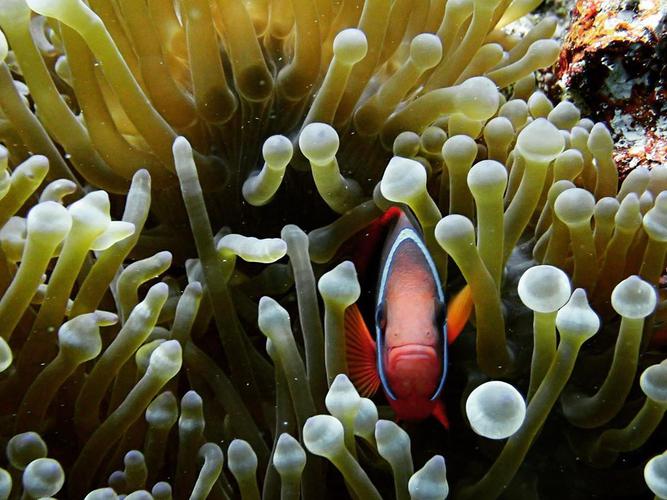
It’s my first day diving in Okinawa! Plenty of fish hiding away in sea anemone 🐟 This is my first time diving in Asia, and I’m really enjoying taking in all the surprising differences to what we see in the Americas.
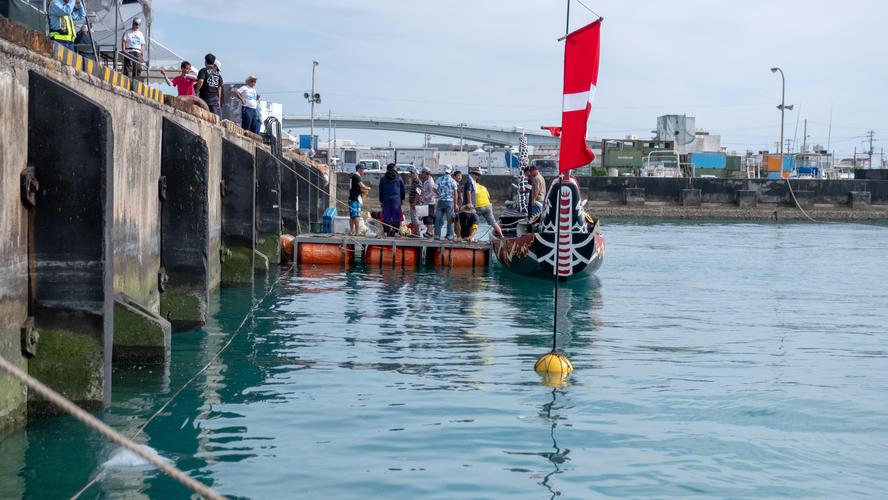
When Tetsu dropped me off at the hotel, I washed off the salt and found a cab to the Naha Hare. Lined up at the harbour were dragonboat races, board-walk amusement park rides, and a coast-guard ship.
There was something heart-warming about the fair: it was clearly a family event. Seeing parents, children, and grandparents sharing picnics on the tarmac and watching the races was refreshing. I was the only tourist that I could spy. Not even military families made their way down the island; however, I find a lone gaggle of white women in kimonos.

Today was my first day in okinawa. Tetsu picked me up from the hotel and we made our way to a small harbour for the day. I was the only person picked up, but three Thai kids around my age met us at the boat. They were lovely.
We saw so many nudibranchs in every shape and size: my favourite sea creature. Seeing so many was a real surprise. During the summer, these sea slugs make their way into the coral to beat the heat. Being on the cusp of the season, it was a gamble as to whether we'd see them. This was the first time since high school that I'd seen them. Unlike my encounters in the Florida keys, the nudibranchs were so varied in colour: jet black, pale cream, bright blue. Spiky, smooth, and geometric.
It felt good to jump in the pool. To be honest, I hadn't quite relaxed since arrived in Japan. I had a lot of fun, but there was no down-time. Laying back on the boat between dives and letting the sun warm me up provided a much needed breather.
When we arrived back on land, Tetsu asked if I wanted lunch. After spending the morning swimming with the fishes, we ate at a local fish market. We wandered around the stalls and settled on a local soba place: the best soba I've had.
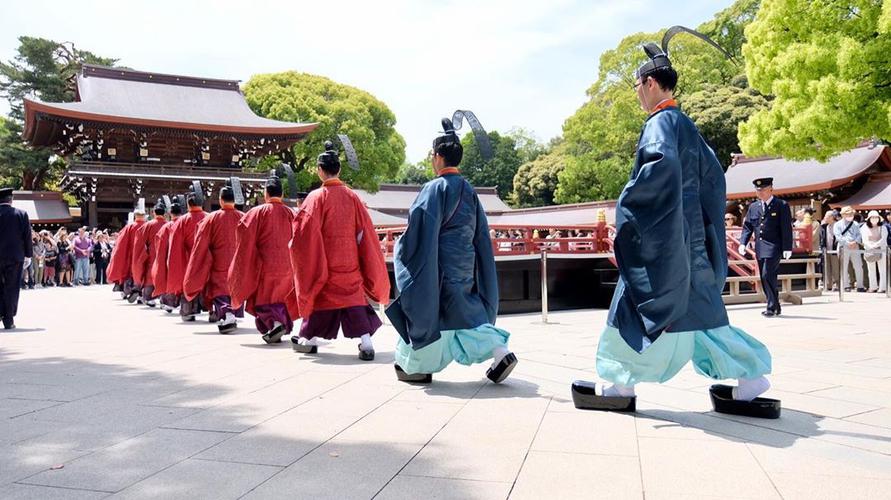
Today was the last day of Haru-no-Taisai, the spring grand festival at the Meji Jinju. Today’s service is the largest Shinto ceremony of the year for the shrine. Amongst the rituals is a sacred dance based on a poem written by Emperor Showa that calls for world peace.
That's it for Tokyo! On to Okinawa for a little bit a scuba-diving and some beach time.
I made my way to Meji-Jinju for Haru-no-Taisui: the spring festival. It's the largest shinto ceremony of the year at the shrine. Rituals include a sacred dance based on a poem for uninterrupted world peace.
Large tori gates lined unmistakably marked the trailhead. The only thing you could smell was lush forest decay. Large trees formed a dense, long walk to the outer courtyard of the shrine.
When I arrived, the service had started. There were many people seated facing inwards. Through the rows of those seated above at the dais, I could barely see the priests.
In the outer courtyard, it was an ordinary day. Devotees arrived at the shrine, making a steady chatter of coins being dropped into offering boxes. So much noise outside while such a somber service inside.
I waited and watched, hoping for a glimpse of the ceremony. A drum sounded. Someone let out a call. A procession made their way down the stairs, walking single file and in unison.
Haneda Airport → Naha Airport
Today Matt and I went to the Ghibli museum. I opted to wake up and head over a bit ealier to take in Tokyo craft week. I made my way over and found a small cafe that specialized in roasting and pour-overs. Swing jazz in the background. The man was friendly and greeted community members walking by, starting their day. He ground coffee for both of us, letting me smell the aroma of each to learn a bit more. I sat and enjoyed my cup, charting my path for the day.
I ambled down a street lined with artesans. I found a yarn store that would wind balls for you based on the yardage you need. I bought a fuzzy frog coin-pouch. The whole street felt like sidney outside of victoria. It had the same pace of people strolling up and down the street starting their day. I followed along.
There was really only one particular place I wanted to visit, and it was shut. I moseyed up and down the street to make sure that I was in the right place. Just as I was about to leave and head to the museum, a trendy-looking woman came barreling down the street to open up the shop. We chatted about about ceramics, and I picked up a chawan in natural colours with green glass pooled at the bottom.
I had to book it over to the museum to make it in time for our slot. Angling for a snack, I made my way into a tea shop that specialized in darjeeling. I was welcomed in by the woman running the shop. By the time I figured out they had no snacks it was too late: I felt like I could walk away from the woman running the store after she was so welcoming. I left with a great cup of tea and huffed it across one of the most beautiful parks I've seen, but regrettably didn't get to enjoy.
I could see why they chose to have the ghibli museum in such a magical, natural park.
It was fascinating how the unmistakably ghibli style was rendered into reality. The familiar shapes and details found in ordinary materials and objects. Even the plants had the look, although effortlessly. None of it felt cultivated.
I was struck by how the crowd interacted with the space. Photos were prohibited, save for a small spot on the roof-top terrace. This meant people were paying attention.
The exhibits didn't have too much content, but what was there was all informative and impactful. A series of rooms set up to look like an animation studio outlined key aspects of the process. My favourite was the story-boarding. The room was plastered with reference images from all sorts of films. I'm not sure if they were originals from film-making, but they were certainly hand-drawn. It was actually a very emotional experience. There were drawings of character studies out in the open, pinned with thumbtacks to the wall. Anyone could accidentally touch them or damage them, but they were in well cared for.
On a table were three art-books. Inside them were plastered cut-outs as a study for one of the films. Pieces of origami paper were used as borders and backgrounds. Everything from horoscopes to trains to military uniforms---all neatly placed in reference books.
The room was filled with treasures. Small sculptures, trinkets, prototypes, reference books piled into a mound. Chaotic productivity. I was inspired, although maybe my inspiration comes from a cargo-cult mentality. It looks productive.
There was a lot of care put into the details. Even the smoke-detectors had caricatures painted around them. There was a cabinet downstairs you couldn't open. Unlike the doors above it, it wouldn't budge; however, if you bent down---to the height of a child---you could lift a flap and peek inside. There was a collection of plush characters and an Oscar. It's not flaunted, but left hidden. You have to be curious to find it.
I bet there's countless treasures I missed.
Akihabara Station → Ghibli Museum
I'm sitting in a small floral shop getting ready for the day. I managed to sleep in and get some rest. I actually came here for dinner yesterday evening after wandering around town. There was a bit of a line: around two hours. I asked the woman at the end of the line about the cafe, and she said she would come and visit every time she was in Tokyo.
If it's so good you'll wait in line for two hours to get into a place you frequent, I guess I'll wait, too.
I started the day by going back to Shinjuku and seeing what it was like with more people out. I found a little side-street with a sign pointing inwards: COFFEE. I obliged.
Hiding in a fashionable and bare building was a tiny place. I ordered a matcha latte that was revelatory. While sipping at a swing-out bar-stool, I noticed a stack of booklets tucked neatly into a holder at the table.
Tokyo Craft Week.
It turns out the place Matt and I were going to tomorrow had plenty of little artisans around. I was excited. After polishing off my latte, I headed to the national gardens for tea-time.
I took it slow, looking for the traditional tea house tucked away. I found it sprouting up next to some bushes, almost hidden. I practiced my best polite entry and was greeted by an elderly lady in traditional formalwear. She sat me on a bench along the wall and handed me a tiny, fluffy sweet in the shape of a cloud.
I slowly sipped on my tea, listening to the rain tap on the thin roof. I continued around the park, rain coming and going with no particular direction. I found a cherry tree that had fallen, with a poem written on a sign next to the decaying husk. I crouched down, pulled out my phone, and drew the characters---like I was finger-painting on the screen. I wanted to read the poem.
There was a greenhouse with many micro-climates and a prodigious collection of carnivorous plants.
I still had a few hours before Matt's reservation at the robot restaurant. I passed the time by wandering around shinjuku. I heard a loud chant in the distance. I walked around until I found a procession and caught up with them. I think they were chanting to the new emperor that ascended to the throne today. There were people lining the streets looking at them, many with a look of irritation or bemusement. The procession was quite earnest about whatever they were preaching.
I then made my way to a few to a few shrines in the area. They were completely deserted because of the drizzling rain. One of them had a Buddha holding a staff that looked just like the sculpture in the National Museum of Scotland's statuary. I found that reassuring.
Harajuku → Shibuya → Shinjuku
This morning, I opted to do something familar: to retread my steps and go back to the renoir for a cup of coffee.
Afterwards, I trekked out to harajuku. I found the famous street and ambled along. Even at 9 A.M. it was already heaving. The streets were bursting at the seams although much of the street was closed.
I have to admit, while some aspects are wild---e.g., rainbow toasties---the street was otherwise unremarkable.
I focused on brahms path and confirmed a suspicion: it is named after the composer. Trundling down brahms path, Being one street removed, really changed the feeling. Even the smell of lush plants growing on the sides of buildings was nice. I charted out the places I wanted to visit and let interest guide me. When I found something unusual or mundane, I let that impulse guide me.
I found so many neat streets---interesting nooks and crannies. I went to a little coffee shop next to shinjuku. It had low ceilings and beautiful heavy wooden seating. I ordered a slice of cake and a pourover.
The couple sitting next to me seemed pleasant. They commented on my choice of cake. We started to chit-chat and I found out that they were from California, from SanFrancisco. One of them did arts and life reviews and commentary.
We chatted about their career, and the sustainability of the arts community in a city being crowded out by tech. They asked me what I did, and I mentioned I was a grad-student studying AI. One of them worked at GoogleBrain. You can never escape. There is no holiday.
This morning, I opted to do something familar: to retread my steps and go back to the renoir for a cup of coffee.
Afterwards, I trekked out to harajuku. I found the famous street and ambled along. Even at 9 A.M. it was already heaving. The streets were bursting at the seams although much of the street was closed.
I have to admit, while some aspects are wild---e.g., rainbow toasties---the street was otherwise unremarkable.
I focused on brahms path and confirmed a suspicion: it is named after the composer. Trundling down brahms path, Being one street removed, really changed the feeling. Even the smell of lush plants growing on the sides of buildings was nice. I charted out the places I wanted to visit and let interest guide me. When I found something unusual or mundane, I let that impulse guide me.
I found so many neat streets---interesting nooks and crannies. I went to a little coffee shop next to shinjuku. It had low ceilings and beautiful heavy wooden seating. I ordered a slice of cake and a pourover.
The couple sitting next to me seemed pleasant. They commented on my choice of cake. We started to chit-chat and I found out that they were from California, from SanFrancisco. One of them did arts and life reviews and commentary.
We chatted about their career, and the sustainability of the arts community in a city being crowded out by tech. They asked me what I did, and I mentioned I was a grad-student studying AI. One of them worked at GoogleBrain. You can never escape. There is no holiday.
This is a big day; it's the end of an era: an imperial era!
I went to Roppongi hills and wandered around a graveyard. A woman on a bicycle rounded the corner and pushed up the hill. A collection of pigeons emerged out of nowhere and followed her---a cloud.
As I was looking for a place to find coffee, I walked by a park with some homeless youth. what struck me was their organization. They were spot-cleaning their clothes, blotting then carefully with small towels.
Every now and then, I worry that I'm spending too much time on trip advisor, or the like---I'm focused too much on finding where to go and not enjoying where I am. I should be thinking around what's around me.
I ended up going to zozo-ji and exploring the mausoleum of tokigawa shoguns. I felt out of place in the small courtyard. There were no western tourists. It was peaceful watching people pray. A handful of the visitors bowed and prayed at select, specific shoguns.
Up at the temple's main hall, many people were lined up to bring incesnse to their forheads and sprinkle it into a burning pile in a bowl.
I was surprised by how gilt the temple was. It was almost as gold as a spanish church; however, it wasn't overwhelming. I think this is because the temple was restrained with its decoration and ornamentation: while select statues were complex, the room as a whole was minimalistic.
Also, I turned a corner and found an elevator. Could you imagine an elevator being retrofitted into a historical church? I don't believe I've ever seen one. When I found the elevator---an anachronism---it struck me how these spaces play a functional role for a large number of people. These temples are spaces that are designed with a practical purpose.
Most people non-religious people in japan pray at shines or private altars, although they don't identify as shintoist in surveys. You can see this in how vibrant the communities are around shines. There were so many families and young adults practicing their religion. At small shrines I walked by on the way to the temple, there were so many people casually stopping to pray.
In the evening, I went to a more popular Senso-ji: an ancient buddhist temple. It is one of the most popular temples in Tokyo to visit.
Droves of people. All of them milling about. I was overloaded with the sounds of people rattling sticks to find their fortune, the sound of people throwing their coins as an offering into massive slatted boxes before bowing in prayer.
While I had my tripod out taking shots of the temple two groups of men came up to me and started chatting. The first man was clearly off. With my chunky camera and travel tripod, I stick out. I was respectful about where I placed myself, making sure not to block the throngs of people moving by. I did stick out visually, though. The first man was maybe in his forties and hovered around me. He cracked jokes---introducing himself as 'Johnny Depp' and photo-bombing---but also silently stared at me in the distance. Something seemed wrong.
Later, a pair of men came up to me: one much older than the other and with far fewer teeth. They told me some things that I didn't quite catch, and the younger of the two suggested I return after dusk for better photos. The two asked to take a photo with me and continued milling about the area. When I bumped into them again, the older of the two gifted me a boar key-chain. I think it was because they saw me offer to take a photo for a family.
It's strange how two similar interactions can diverge for seemingly minor reasons.
Roppongi Hills → Tokyo Tower → Zōjō-ji → Sensō-ji
We woke up early to go to Odaiba: an artificial island filled with amusement parks and expo halls. The train to the island had a wonderful view; we dipsy doodled east, crossing a bridge over to the island. Through the dockside cranes you could catch glimpses of mount fuji: a little triangle on the horizon slightly obscured by particulate and capped with snow.
We were on the island to see the Team Epsom Digital Art Museum a concept piece that dwells on themes of nature and industry. We entered into a dark room that erupted into an open space covered in butterflies. There are no maps: there is no set path. We discovered each installation by exhaustively searching through a maze of hallways. I'm still not sure if we managed to even find all the installations.
The first room I found was my favourite: The Nest. You entered by climbing across a rope cat-walk down into a net. We were suspended in the dark above a mirrored floor, giving the impression that you're floating in an endless abyss. Lying down in the nest, you could see a mass of what looked like stars, all flickering in the void.
Once everyone was settled, a few glyphs moving and changing emerged from the darkness. Shapes and sounds whirred around, giving the feeling that you were warping through space and tine.
Getting lost in the museum was immensely satisfying. The whole labyrinth really imparted a sense of wonder. The meticulous sound-scaping and darkness of the museum created a complete, immersive experience.
What caught me the most was how they played with your perception by creating complex projections onto irregular spaces.
Each of the rooms had to be discovered. Subtle cues in the hallways alluded to the presence of another room---for instance processions of sedans of animals marching down the hall.
In the back of one of the rooms, obscured by a sheer curtain, was a tea-house. Using carefully arranged projectors, the chaisu's were decorated with blossoms that slowly blossomed in your tea as you drank it. ONce you finished, or if you disturbed the projection enough, the blossoms blew away.
It was beautiful to watch the cup with the froth---almost as interesting as watching the rest of the room discover their tea. There was a small child sat on a guardian's lap, helping herself to a bowl of matcha icecream. Although the room was dark, you could just barely catch her expression in the reflected light of a field of grass crowing around her icecream bowl.
The space was inspiring.
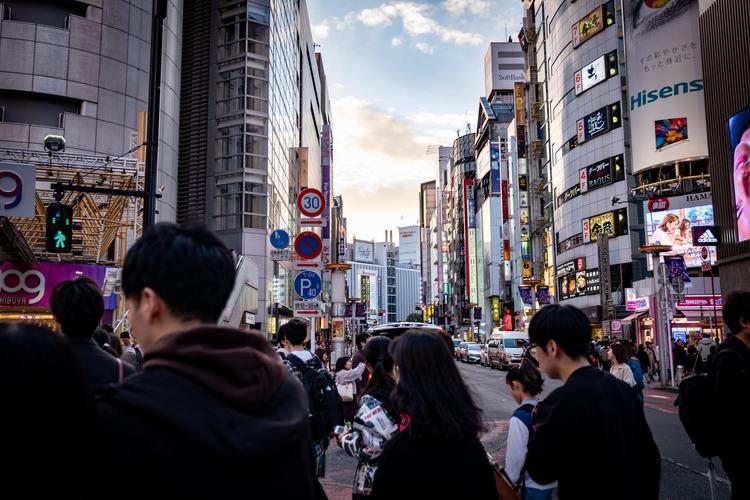
We wandered by Shibuya in the evening, just as the sun was setting. After emerging from the subway, we found ourselves pushing through a nationalist rally. Just as the speaker handed a microphone to a middle-aged woman, we crossed behind her: directly in the camera's line-of-sight.
I guess strong xenophobic sentiment is still and issue. In one of the department stores is a patio which hosts live music and has the best view of Shibuya crossing: one of the busiest intersections in the world.
We climbed to the observation deck and watched the hoards of people flood the street to cross along the chasm of the scramble. It wasn't until I started taking long-exposure shots that I noticed something: within the swarms of people are little stationary specks. You could see clusters of people taking selfies in the dead-centre of the crossing.
Today I landed in Tokyo for the first day of a three week trip around the country. I'm no stranger to long-haul flights. When I was an undergraduate student I had to make the voyage between western Canada and Scotland fairly regularly. In spite of my seasoned travelling, this was a uniquely punishing flight. I made the poor decision of trying to get work done on my flights, and by the time I arrived I paid for it.
I made my way through immigration relatively painlessly and drifted to the airport's train station. By this point, I was running on less than fumes: my tank was empty.
I rested into a coma as the airport train whirred past Narita, through the countryside, and into Tokyo proper. It didn't really click with me---It hadn't really settled that I was so far away until I saw Narita-san standing tall above the canopy of trees. I tried to soak in as much as possible while sinking deeper and deeper into my train seat. Rice paddies, amusement parks, shopping malls, forests all blurring together.
My friend and I found a nice, cheap hotel in Akihabara. Emerging from the station into the Friday-night rush was overwhelming. Salarymen heading to the bars were huddled on every corner.
The first thing I needed was food.
I've travelled a lot; I'm comfortable moving around in places where I don't know the native language. In spite of this, I milled around the same few blocks over and over again---spending well over an hour looking for a place to eat. The major inhibitor was a crushing social anxiety. I didn't want to be rude, but by not being fully aware of social protocol, I was inevitably going to be.
I eventually ended up steeling myself for ramen. Like a social freak, I stood outside of a ramen shop watching how the business people ordered. 1) Go to the kiosk, 2) enter your order, 3) take your seat and hand the waitstaff your ticket. I felt like a social freak for not being able to do something so simple.
It was a slightly solitary experience. People come in, eat, and then leave---a purely nutritional exchange. Like a sit-in taco truck. Only two people the entire time I was there exchanged a word between each other; everyone else ate in silence and then left. Often western people seem afraid of eating alone. After all, You should be able to find people to eat with. That anxiety of looking like a social outcast makes some sense: eating is in many senses a social experience in most western cultures.
On my Way to Japan for the next three weeks!
Edmonton International Airport → Vancouver International Airport → Narita International Airport